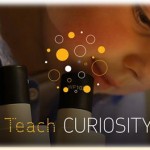Teaching on the Edge of Your Seat…
Things we must remember:
Student thinking lies at the heart of our teaching. We must plan with students in mind (not just content). Our plans must be explicit to WHOM we are teaching. We must think about whether or not our students need more background knowledge, small or whole group lessons, and how much time needed to build/connect/understand concepts. Their thinking is the essential resource. It powers all the work in our classroom. Differentiation is/becomes NATURAL if you are aware and know your students’ needs. It is not about what is NEXT – it is about what is in front of you. How often do we really sit down and ask ourselves/consider how and why students struggle? It is important to value these moments when students don’t know the answers. Deeper not wider – What good is teaching every detail of unit of study if students don’t understand it.
Keep the body of the lesson focused on open-ended topics. Probe students’ thinking and listen to them. Students should be doing most of the talking in the classroom. Talking allows a teacher to discover what his/her students know and where they are struggling. It gives students a chance to express different ideas and interpretations. It serves as a window into students’ thinking processes. It gives students a chance to connect with one another and it supports the growth of more ideas.
Create a space for students to reflect after the lesson on their academic work and social interactions. Classrooms should be full of VISIBLE THINKING from students.
Build a sense of community – Teaching students the skills they need to interact with one another allows us to facilitate lessons in much more meaningful ways.
Purpose/Powerful Lessons – Lessons should be engaged in meaningful thinking and interaction. Purpose involves rigorous thinking, creativity, and risk-taking. Use the “TEACHABLE MOMENTS.” Powerful teaching is the result of intentional planning and deep reflection.
“We don’t learn from experience, we learn from reflecting on experience.” John Dewey
Monitor student thinking – data is intentional (journals, writing, conversations, brainstorming, tweets, edmodo, reading, sharing mental images, and formative/summative assessments). Allow for reflection, both academic and social debriefing.
Asking questions (after you listen) – What are you thinking about? What are you wondering about? Foster investigation, inquiry, wonder, and imagination.
Risk-Taking is essential for growth. It thrives in a safe and supportive classroom community where students feel known and accepted. Classrooms should be designed so that collaboration, imagination, and community are at the center of classroom life. Students need to feel free to try something on their own.
You have to be self-seeking…Always searching for better ways…Always wanting better for your students…searching for growth…taking advantage of PD/learning opportunities…IT IS CONSTANT/LIFE-LONG LEARNING! The learning that a teacher gains will both directly and indirectly affect student learning.

